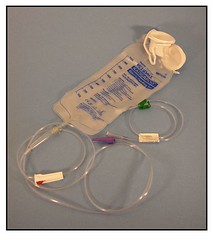 One of the fad diets that has been making headlines is called the Feeding Tube Diet. Instead of eating, a physically healthy person pays to have a doctor place a feeding tube into her body specifically for the purpose of losing weight. Is this something that a person can expect their health insurance plan to cover?
One of the fad diets that has been making headlines is called the Feeding Tube Diet. Instead of eating, a physically healthy person pays to have a doctor place a feeding tube into her body specifically for the purpose of losing weight. Is this something that a person can expect their health insurance plan to cover?
The Feeding Tube Diet, which is also called the K & E diet, is one that is popular with women who will be getting married soon. The primary motivation for choosing this particular diet is that the woman is concerned about appearing as “a fat bride” on her wedding day. They decide to do the Feeding Tube Diet because it promises rapid weight loss. These women do not have any medical conditions that would require a feeding tube as a form of treatment.
The diet has been introduced to the United States by Dr. Oliver Di Pietro. A person who chooses this diet will have a feeding tube snaked up her nose and into her stomach. The tube will be attached to a plastic bag that will deliver an 800 calorie a day liquid-only diet, (that includes proteins and vitamins). The person must carry this bag around with her at all times, for ten days. She is only allowed to consumer water, black coffee, and unsweetened tea.
It costs a total of $1,500 to do the Feeding Tube Diet for ten days. It is also possible to pay by the day, instead of in one lump sum. As far as I can tell, this will not be covered by a person’s health insurance plan.
In general, health insurance companies will exclude coverage for things that are not medically necessary. The Feeding Tube diet is not medically necessary. People are choosing to do the diet entirely for cosmetic reasons. There are risks involved with this diet because it could push people into ketosis.
The Eating Disorders Coalition feels that this diet is wrong. It says that one in four people who do this diet end up developing eating disordered thoughts and behaviors. They point out that most insurance plans do not cover treatment for eating disorders. People who have a severe eating disorder, and truly do require the use of a feeding tube in order for them to survive, are dying because their insurance plan will not cover it for them.
Image by MaryBethWrites on Flickr

